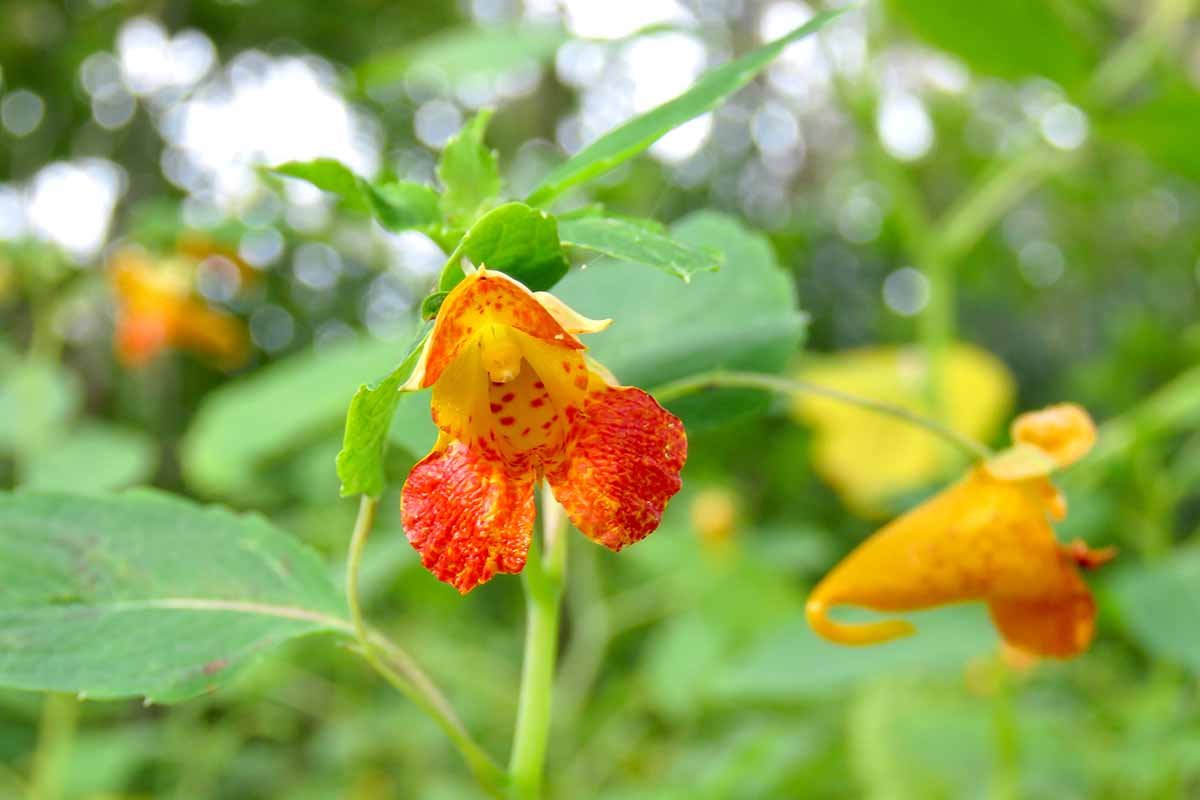As you walk along the South Fork trails at Zonolite, Peavine, or the Confluence, keep your eye out for flowers that are in bloom right now. If you’re stumped about the name of a plant, you can check out the plant on the INaturalist app.
Jewelweed
This annual plant grows along wet, shady areas of the South Fork. Its scientific name is Impatiens capensis. Jewelweed blooms from June to October. Hummingbirds and butterflies are attracted to these showy flowers for their nectar.
Native Americans used the watery jewelweed juices to relieve itching and irritation associated with poison ivy, stinging nettle, and insect bites. Jewelweed was also used as an eye medicine, a diuretic, a burn dressing, and a yellow/orange dye.
Coreopsis
In the language of flowers (floriography), Coreopsis means “always cheerful.” These delightful natives of the Americas are part of the colorful pallet in the Confluence Garden along the South Fork.
The common name for coreopsis is tickseed, named because the seeds look like ticks. Coreopsis flowers have been commonly used as natural dyes. Before the introduction of coffee into their culture, indigenous people boiled the flowers into teas. As you walk past the Confluence, you’ll see coreopsis blooming in June and into the summer.
Elderberry
Elderberry is a tall plant found along stream marshes, moist forests and disturbed areas. There’s a lovely stand of elderberry that you can see when you stand on the Confluence Bridge. Its scientific name is Sambucus canadensis.
Spring flowers are followed by a purple-black drupe that is produced in drooping clusters from late summer to fall. The drupe is an edible fruit, and when cooked can be used in pies, pancakes, and jellies. Elderberry flowers and fruits are also used in winemaking. Wildlife enjoy the fruits, and the branches provide a habitat for nesting birds.
In some traditions, the elderberry tree is thought to ward off evil and give protection from witches, whereas other beliefs say that witches often congregate under the plant, especially when it is full of fruit.
Here's a recipe for elderberry liquor.
(Compliments of Molly Hanna, South Fork intern in 2022)
Remember these safety tips before collecting any wild plants.
Ingredients
1 large or two small lemons, washed and sliced into rounds
20-30 fresh elderflower clusters with the blooms cut from the thicker stems
1 750 ml bottle of vodka
½ cup honey or sweetener to taste
Preparation
In a large glass or metal pitcher or quart-size mason jar, add elderflowers to 2/3 or almost full
Pour vodka over the top and then add slices of lemon to weigh down the flowers
Stir well to combine, and cover container with cling wrap
Place container in a cool, dark place for 2-4 weeks
Strain out lemons and flowers which can be composted
Add the honey or other sweetener and shake well or stir to combine
Add additional sweetener as needed
Bottle as desired
Can be consumed at this point or kept to age









